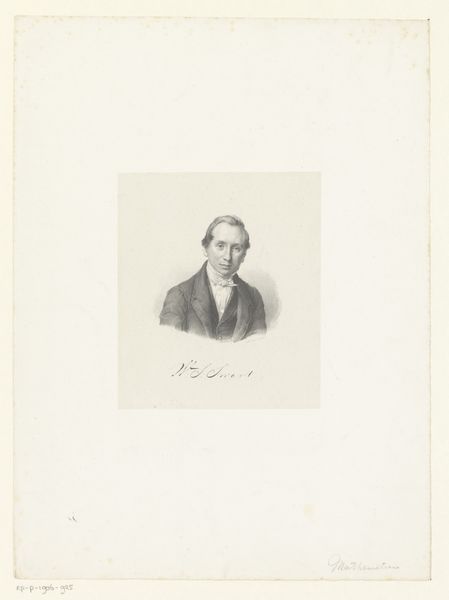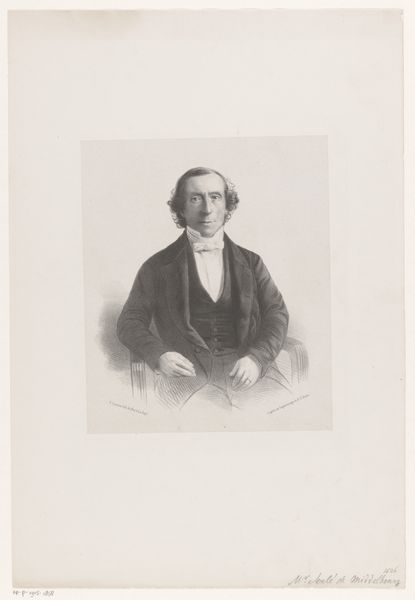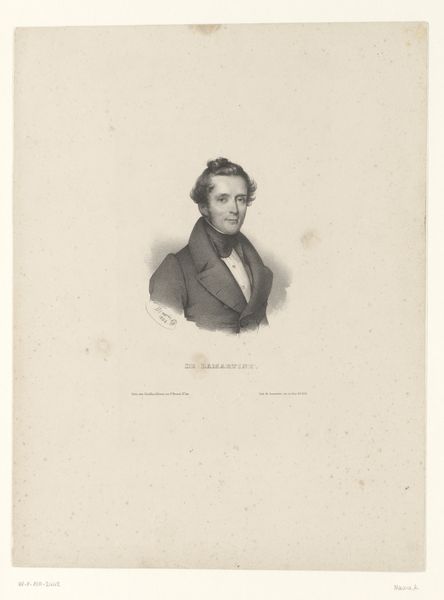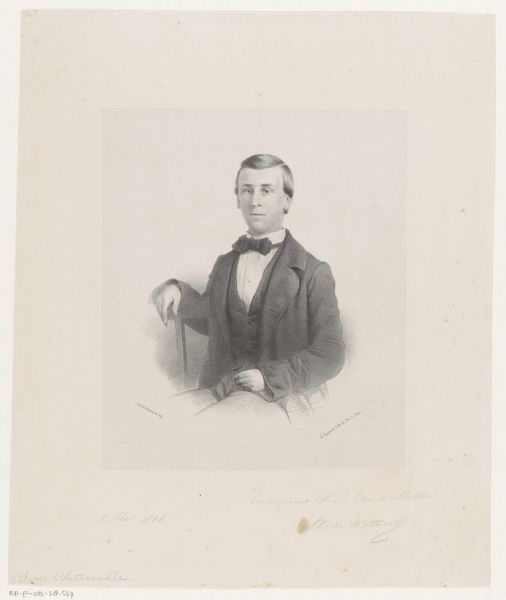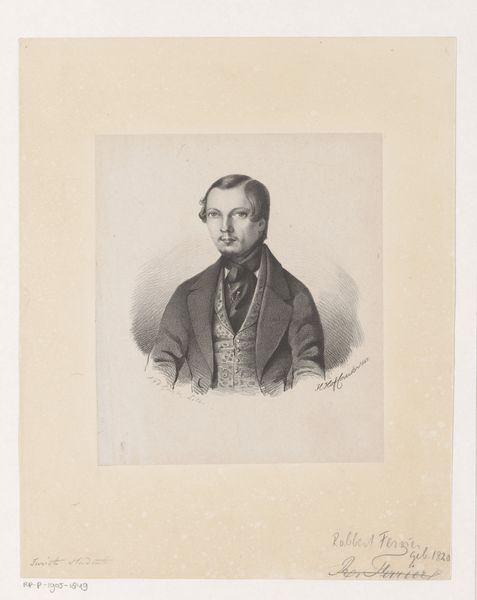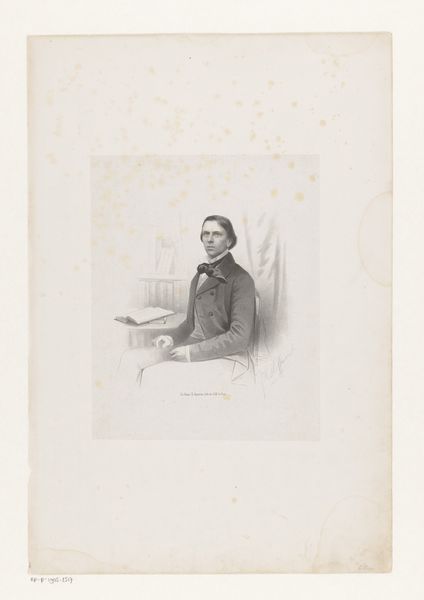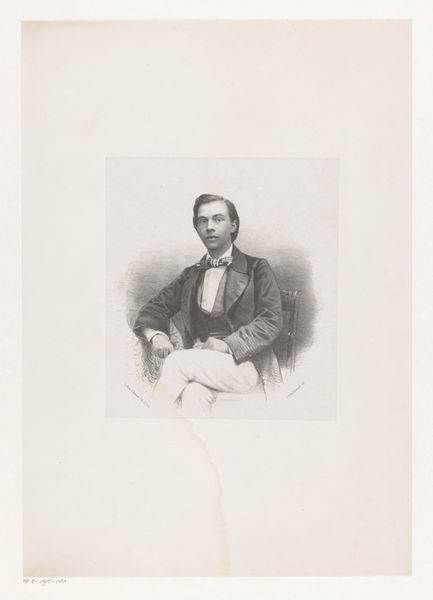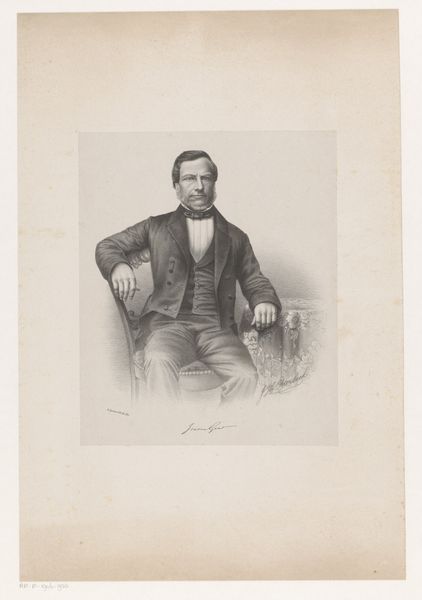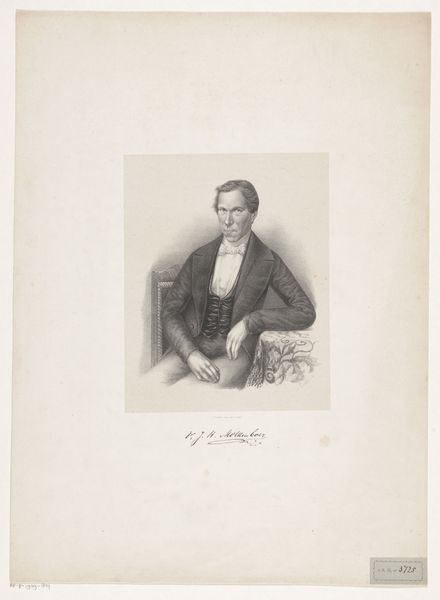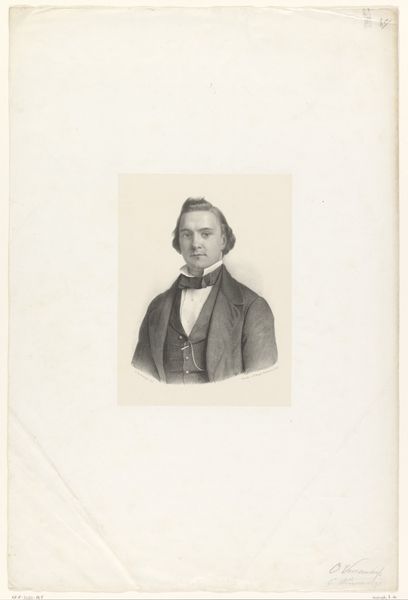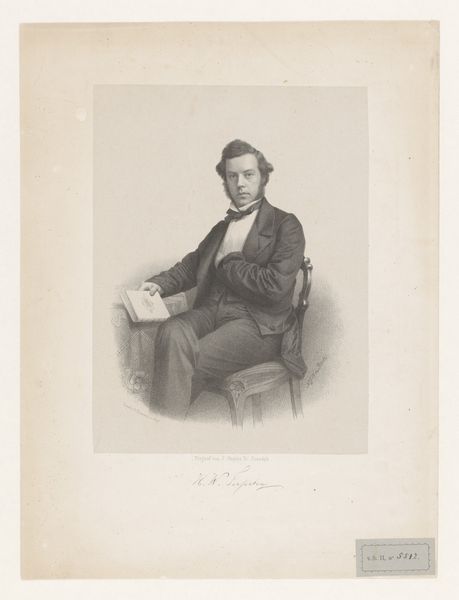
Portret van een onbekende man, mogelijke de heer Rambaldo c. 1851 - 1883
0:00
0:00
drawing, pencil
#
portrait
#
pencil drawn
#
drawing
#
pencil sketch
#
pencil
#
academic-art
#
realism
Dimensions: height 440 mm, width 310 mm
Copyright: Rijks Museum: Open Domain
Editor: This is "Portret van een onbekende man, mogelijke de heer Rambaldo," a pencil drawing from around 1851 to 1883 by Johan Hendrik Hoffmeister. It feels very proper, very buttoned-up, in that mid-19th century way. What can you tell me about the kind of person who would commission or even be represented this way? Curator: It is interesting to consider the social role of portraiture at this time. Photography was becoming more widespread, yet hand-drawn portraits like this still held a certain status. Who was this portrait for? Was it intended for private family viewing, or for a more public display, signaling the sitter's social standing? Editor: That's interesting. I hadn't really thought about the audience beyond the family. So, how would a drawing like this function in the larger world? Curator: Consider the emerging middle class. For them, having a portrait made – even in pencil – could have been a way to emulate the aristocracy and visually declare their arrival and participation in the public sphere. It was part of constructing their identity and claiming space within a changing social landscape. The meticulous detail, the formality of dress – it all contributes to a very carefully constructed image. Editor: So it's almost a form of social performance. Do you think that applies even when we don't know for sure who the person is? Curator: Absolutely. The 'unknown man' only amplifies the narrative. It becomes less about the individual and more about the archetype: the aspirational bourgeois male, carefully presented according to the norms and expectations of the time. Editor: That really changes my perspective on what I'm seeing here. Thanks. Curator: It is a reminder that art is never created in a vacuum, but always within a web of social, political, and economic forces. And thinking critically about that history enriches our experience with this beautiful portrait.
Comments
No comments
Be the first to comment and join the conversation on the ultimate creative platform.
